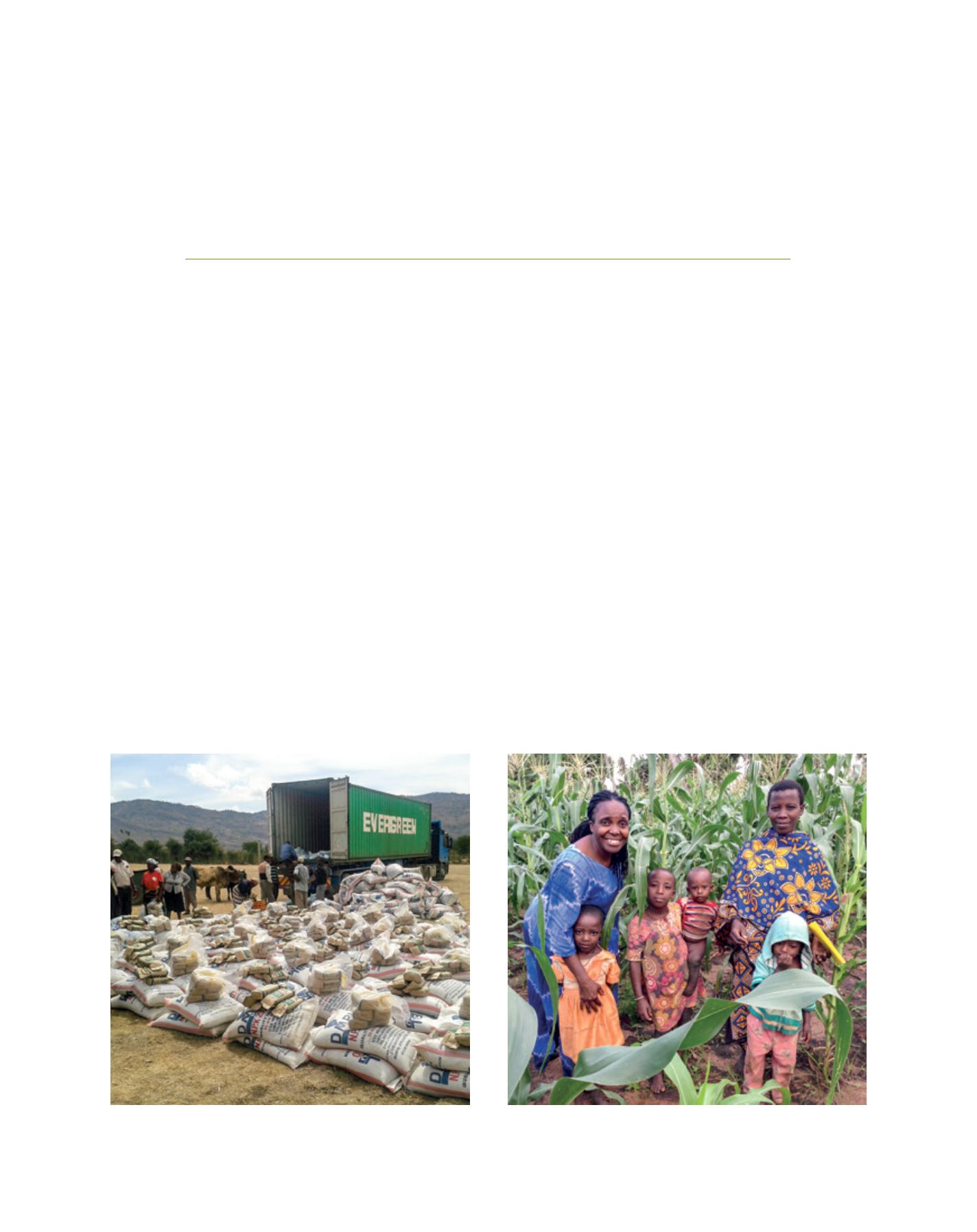

[
] 207
Moving from destitution to
self-sufficiency: family farming
resilience and food security in Kenya
Dr Johnson Irungu, Director of Crops Management and Tom Dienya, Head of Food Security
and Early Warning Unit, Ministry of Agriculture, Livestock and Fisheries; and Esther Musyoka, Monitoring
and Evaluation Officer, National Agricultural Accelerated Input Access Programme National Secretariat
A
griculture is the mainstay of Kenya’s economy.
The agricultural sector accounts for 61 per cent
of employment and 25 per cent of gross domestic
product. Over three-quarters of Kenya’s population lives
in rural areas and 61 per cent are dependent on agricul-
ture, livestock, fisheries and related production for their
livelihoods. In Kenya’s northern regions, pastoralism
accounts for 90 per cent of employment and 95 per cent
of family incomes.
Over 75 per cent of Kenyan farmers are smallholder subsist-
ence farmers who largely depend on natural rainfall for their
farming activities. Owing to many challenges that affect
Kenya’s agriculture, including climate change and unfavour-
able weather conditions, inadequate access to finance, low
use of recommended inputs, high cost of agricultural inputs,
poor rural infrastructure, inefficient marketing systems for
farm produce and poor farmer organization, among others,
most of these small-scale farmers are poor and vulnerable.
Stella Kosgei, a farmer in Sachangwan location, Molo
subcounty, Nakuru County is a successful farmer who was
once a typical small-scale subsistence farmer, farming solely
for household consumption. But through hard work and a
desire to move out of poverty, Mrs Kosgei has managed to
change her family’s livelihood through farming to become a
shining example of adaptive resilience from unproductive to
high-return agriculture; she shares her joy through the follow-
ing story as captured by the area agricultural extension officer,
Ernest Githinji.
It all began in May 2011 when Mrs Kosgei was selected to
be one of the beneficiaries of a government-sponsored, pro-
poor, voucher-based farm subsidy programme known as the
National Agricultural Accelerated Input Access Programme
(NAAIAP). Established by the Government of Kenya in 2009,
NAAIAP’s primary objective is to improve access and affordability of the key
agricultural inputs needed by millions of resource-poor, smallholder farmers
NAAIAP helps poor households break their poverty cycles through the
adoption of intensive, business-oriented farming systems
Image: NAAIAP
Image: NAAIAP
D
eep
R
oots
















